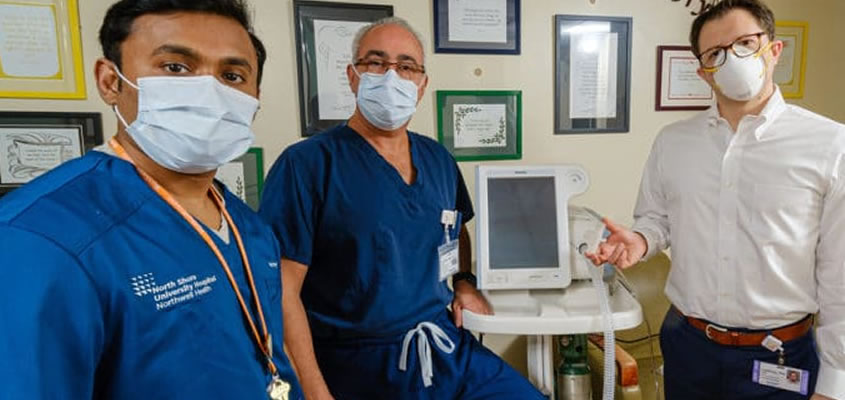
SMA patients require a range of specialized equipment to assist them with breathing, coughing, or swallowing, to help as they go about daily activities, and to improve mobility.
Breathing problems are the leading cause of illness in children with SMA, and the most common cause of death among children with SMA type 1 and 2.
SMA experts list five key areas for care in children with SMA, and recommend that each be discussed with a patient’s doctor and therapist. Managing breathing problems is one, and an essential one. A variety of equipment exists to help these children, and choices need to consider the nature and severity of a child’s breathing difficulties. One common type of specialized at-home equipment is the Bi-level positive pressure (BiPAP) machine to help with breathing while a child is sleeping.
Bi-level positive pressure (BiPAP) machine
BiPAP machine (pronounced “Bye-PAP”) is a non-invasive ventilation breathing support that is delivered through a mask over the nose, or the nose and mouth, or through a tube under the nose and into the nostrils. The machine provides two levels of positive airway pressure: higher pressure and an increased volume of air when breathing in, and lower pressure, automatically adjusted, when breathing out. The machine senses the child’s normal breathing cycle and works with it. It also gives breaths when a child is in deep sleep and not breathing adequately on his or her own.
Common settings used in caring for children with SMA include:
Inspiratory positive airway pressure (IPAP) of 14 to 20 cm H2
Expiratory positive airway pressure (EPAP) of 3 to 6 cm H2
Respiratory rate of 14 to 30 breaths per minute, based on age and resting respiratory rate.
Inspiratory time of 0.5 to 1.5 seconds, based on age and respiratory rate.
Continuous positive airway pressure (CPAP), which gives one continuous level of pressure, is not recommended for SMA patients because it does not allow for adequate rest of muscles used in respiration.
Philips Respironics offers these BiPAP machines:
DreamStation BiPAP AVAPS aligns with the patient’s breathing patterns to minimize applied pressure support and machine breaths. The equipment is light and small with easy-to-navigate menus.
BiPAP S/T offers a straightforward user interface and integrated, heated humidification for easy setup and management. The machine is capable of information transfer by SD card and by wired, wireless, and broadband modems. It also has an onboard memory, storing data even when no SD is present.
BiPAP AVAPS automatically adapts to disease progression and improves ventilation efficacy. The machine is capable of information transfer by SD card and wired, wireless and broadband modems. Like the BiPAP S/T, BiPAP AVAPS also has an onboard memory.












